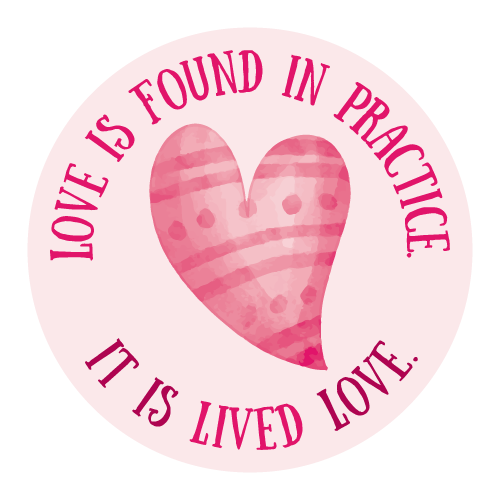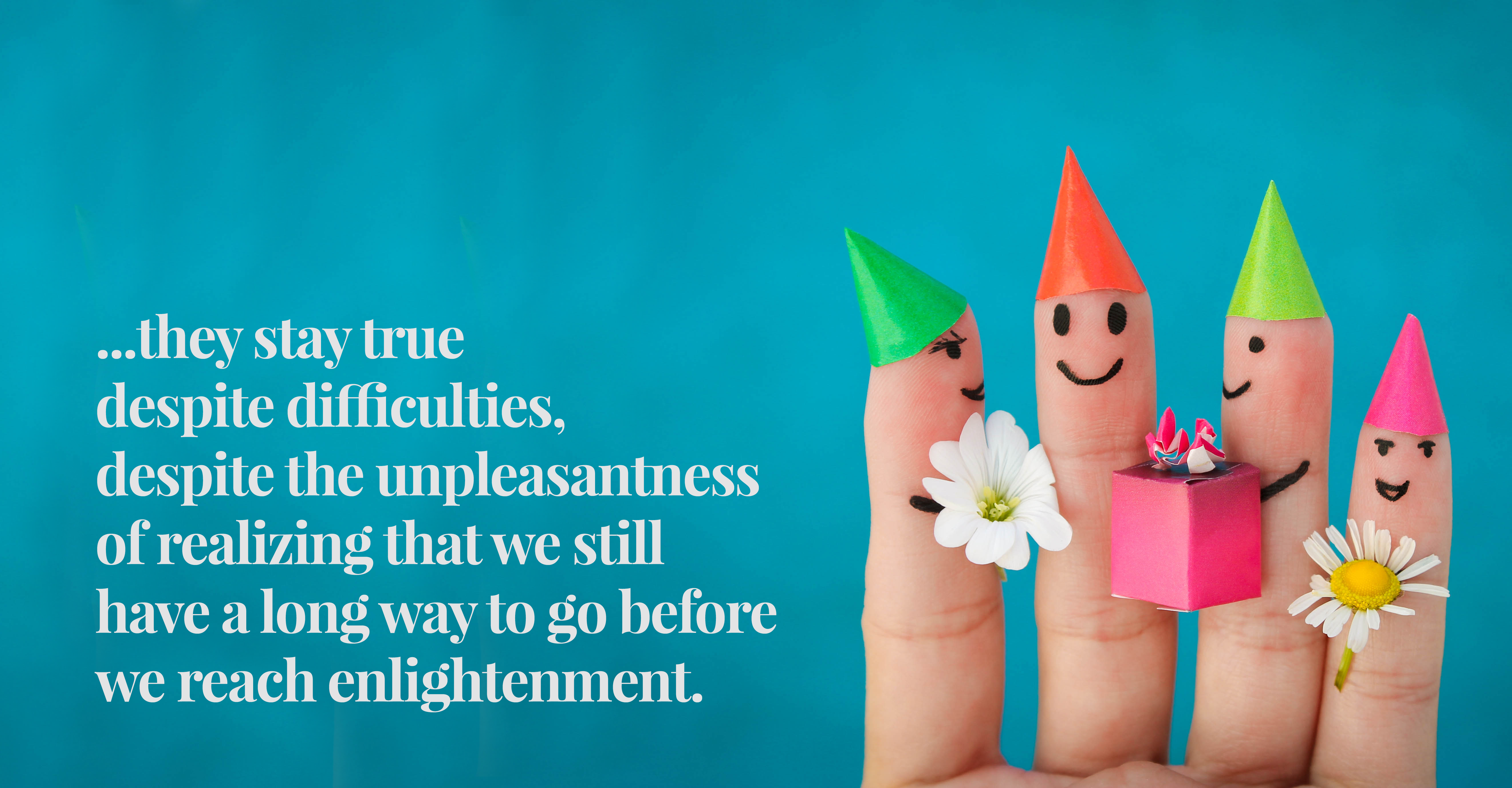Love in the time of pandemic
Recently, a friend mentioned the phrase, “love in the time of pandemic,” (playing on Garcia Marquez’s Love in the Time of Cholera, of course) as we reminisced and teased each other about the things that we miss now that we are all forced to work from home. I thought it would be a good title for this essay, since I want to reflect on love—yes, the romantic kind—once again.
I am not sure if this is true everywhere, but I noticed from stories shared with me lately, that many couples whom I have known to be happy together, seem to be running into a lot of difficulties these days, finding it very hard to keep their love alive. Many of them find themselves arguing more often than usual, or feeling disappointed about their partner’s responses, and several of them have actually called it quits (holding grudges, of course). I wonder if the pandemic has anything to do with it. Of course, we know that people in a relationship argue once in a while, or even break up, whether there’s a crisis or not. But I want to ruminate on the possibility that the CoViD situation is making things more difficult, even for couples who would otherwise be normally getting along very well.
The first thing to blame is the forced distancing that makes all relationships of this sort long-distance ones, even if the people involved are in the same city. Naturally, relationships based on being physically together will suffer tremendously. Pining for the other’s physical presence, despite all the platforms available for real-time connection, becomes stronger as the quarantine period gets longer. Also, long-distance relationships are mostly based on verbal communication. Partners who have not been very verbal and have gotten by with expressing their affection through physical touch, gift-giving, malling, or going on trips where there are so many distractions that they don’t have to really talk to their respective partners, are now at a loss for words. The issue becomes more burdensome when the other in the relationship happens to be loquacious in his or her expression of love.
Also, because life as we knew it had to change as people are forced to stay home, chances are, there is now more time to think about things. Unfortunately, this “thinking about things” usually take the form of thinking about what is outside of us. People tend to think about the relationship they are in and now have the extra luxury of examining the minutiae of that relationship. Without the distraction of the daily rush to work, or school, or doing errands, coupled with the worry over how one’s relationship could be kept alive in this situation, the mind tends to nitpick. All the wrong things about the relationship are brought to consciousness. Disappointments are felt. Confrontations ensue. And if one is not skilled in giving believable and legitimate excuses, then disaster is imminent.
Panic over the relationship and the burden of having to deal with the dangers of the virus, especially when tragedy strikes one’s family, now tend to lead to more misunderstandings. Accusations are thrown so easily—“you don’t care anymore”—when voice or video calls are missed. The urgency of having to prove one’s love within very limited parameters could drive people crazy. The weak-hearted have no choice but to give up.
It is often said that the Buddha does not talk about eros or romantic love, so lovers who seek crystal-ball like advise from Buddhist writings are often disappointed. This is because the Buddha sought to eliminate suffering in the world by treating the causes of suffering. Romantic relationships, unfortunately for its fans, are often a cause of suffering. It is as if society has crafted it so that we suffer in it. If we don’t suffer in love, we don’t love at all. The drama goes hand in hand with being in a relationship. Think of Romeo and Juliet (if you die, I die), of Guinevere and Lancelot (if I can’t have you, nobody can have me), of Tristan and Isolde (if I suffer, you should also suffer). We have been led to believe that we cannot be whole without finding the one who could complete us. It’s as if a happy and sane relationship where two whole beings come together is an oxymoron. Love is sought out of the need to need and be needed. We identify the one according to our preconceived notions of the perfect person or the perfect partner for us (but how do we know?) When this person does not behave the way we expect, or turns out to be different from our idea of him or her, we get heart-broken. We trap ourselves in this terrible pattern and expect a happy ending. We do not see how sick the situation is to begin with, and how we design it to produce more sickness—more suffering—along the way. There is truth, after all, to Jean-Paul Sartre’s pronouncement that love is doomed to fail.
On the contrary, when Buddhism takes up the subject of love, it describes it in terms of the four practices (the four immeasurables) of loving-kindness, compassion, giving joy, and the cultivation of all these to benefit all. (see Metta Sutta – Loving-kindness (1-2), AN 4.125-126). Love is engaged in with kindness and good will, not distrust and suspicion. It is supposed to help alleviate suffering, not cause it, in the partner or in one’s self. It is supposed to be a cause of joy, a contentment felt in oneself and in the other’s self, not a cause for craving to be made whole by the other. And most of all, it is supposed to be inclusive. Love is meant to grow and expand beyond one’s limited relationships in order to include all. The last one makes it difficult to align Buddhism with romantic relationships that are designed to be exclusive. But this does not mean that Buddhism frowns upon such relationships. It just frames it in a different way.
There is a parable in Chapter 8 of The Lotus Sutra that narrates the story of a poor person who visits his rich friend. The latter treats him to a feast, which got him so happily intoxicated that he fell asleep. Meanwhile, the rich host, being a public servant, was called to an urgent business and had to leave immediately. He wanted to help his less fortunate friend by gifting him with a magic jewel that could fulfil all desires. But he did not want to disturb the poor man’s sleep, so he sewed the jewel on the inside of his jacket, instead, and left.
When the poor man woke up, he realized his friend had gone, but not the jewel that was sewn into his clothing. He lived a life of poverty, wandering like a nomad from one place to another, and going through many, many difficult situations, always wanting, always needing. After a long time of such suffering, he met his rich friend once more. The latter could not understand the state he was in, given the magic jewel he had given him. Only then did the poor man realize that he did not have to suffer so, since he had had the priceless jewel with him all this time.
I think we suffer in love because we are like the poor man who did not know that he had the means to be happy and well all this time, all on his own. We enter a relationship thinking that we have no value until we find someone who will love and complete us. Then, we cling to that person for dear life. When things change, as they are bound to, or when they don’t turn out the way we planned, we feel that we have failed, and we are back to being incomplete and feeling worthless again.
The Buddhist understanding of love starts with our being whole. We are already priceless as we are, like the magic jewel. Our task is to work on our self so that we, on our own, become our own source of joy and happiness. Only then can we act with true loving-kindness and compassion toward all beings. A person who gets into a relationship as a whole being will also be able to allow the other to be whole, all unto his or her own. She or he is not likely to love mere (false) ideas of the other that feeds the ego. In short, there will be no illusions. Without illusions, joy and happiness can flow freely within the relationship and naturally expand outside of it, affecting everything else in a positive way. This way, that love becomes all-inclusive. Pandemic or not, it would stay true; but such is especially helpful in crisis situations.
Love is supposed to inspire joy and happiness in us. It is supposed to be an addition to the things in life that we already enjoy, not something we need to fill (an imaginary) void. If everybody entered a relationship with this frame of mind, I think relationships would withstand the test of time without the suffering that is often believed to come with it. I’m afraid, however, that a scenario like that would seem too boring to those who have been led to believe that love is not love without the corresponding drama, which is outwardly detested but is actually sought for in some twisted notion of how it is to be in a relationship.
It seems we have a long way to go in unlearning what we have been taught about love. We can only hope that we all find the magic jewel in the hem of our inner self, sooner rather than later.
Leni Garcia, MA, PhD works as a professor of Philosophy but lives as an artist-advocate for creativity, gender- and religious-inclusivity, pluralism, and environment care. When not trying to form deep connections with gentle, sentient beings, she pushes paint on paper, dances, and recycles odds and ends that can be recycled. Her favorite term-break activity is marathon-watching movie- and cartoon-series with her daughter.





